Auto Insurance Optional/Additional Coverages: Separating the Worthwhile from the Worthless4/30/2014 When you get a quote for auto insurance or purchase a policy, secondary coverages are (and should be) an afterthought. That's because your five basic auto insurance coverages are more important to think about first. So it's very important you know this information before ever worrying about additional optional coverages. But with that, you still need to look at and consider the secondary coverages offered as well. Some are very important while others are worthless. So you need to know which coverages are worth looking further into, and which ones you should ignore. I have comprised a list of these common additional coverages and the rundown on them. You will notice that some are very cut and dry regarding their value while others can go either way, depending on the company that offers the coverage. For those types of coverages, you're going to have to take a close look at each individual policy and find out exactly what that additional coverage offers because it can vary by a lot. I'll explain those as we get to them. But here's a list of additional coverages and also some advice to help you separate the worthwhile from the worthless:
Summary: Some optional coverages are very worthwhile to carry while others are not. I recommend you take some of these coverages and stay away from others. But in many instances, you are going to need to look deeper into what is covered for what price and decide for yourself. But the bottom line is, for most secondary coverages, you should at least find out these particulars because some are definitely worth having. Get an Auto Insurance Quote with Lyles Insurance Call me for a Quote Related Blog Articles: Video: Key Auto Insurance points to know when buying a car Video: Why State Minimum Liability Auto Insurance Coverage Sucks! Video: Understanding your auto insurance declaration page Video: How Your Driving Record Affects Auto Insurance Rates Video: 6 Ways to screw up your auto insurance rate
0 Comments
Having an active SR22 in place is usually the last step before having your drivers license reinstated with the Ohio BMV. But how do you go about setting up the SR22 filing correctly so that you have coverage for what you need? And, how can you do so while also getting the lowest affordable rate? The process isn't as complicated as you might think. It's really only a four-step process:
First step: Determining which type of policy you need. The first step is real simple:
Second Step: Selecting the proper levels of coverage. After you have determined which type of policy you need, you then need to select the levels of coverage that is right for you. If you do not understand the basics of an auto insurance policy, see my blog article titled Basics of an auto insurance policy. This will give you a better understanding of coverages and how to select the right levels that you need
Third Step: Going through the quoting process.
Fourth and Last Step: Filing the SR22 with the Ohio BMV. There are two ways of doing this. The easy way and the fast way: Easy way:
Fast Way:
Summary: Getting the right Ohio SR22 policy is not as complicated as it seems. Arming yourself with knowledge of these 4 simple steps will help you find the right policy, coverage, and price for you. If you would like some help in finding the right Ohio SR22 policy, feel free to fill out one of the three quote forms below. I will do my best in finding the right coverage and price for you. And as always, I handle all quotes personally and privately. Get an Ohio SR22 Auto Insurance Quote with Lyles Insurance Get an Ohio SR22 FR Bond Quote with Lyles Insurance Get an Ohio SR22 Named Operator Quote with Lyles Insurance Call me for a Quote Related Blog Articles: Video: How long do you have to have an SR22 in Ohio? Video: Ohio BMV & SR22 auto insurance reinstatement guide What is an Ohio SR22 Bond? Differences Between an Ohio Financial Responsibility Bond and a Named Operator Auto Insurance Policy Ohio BMV Random Letter Selection Auto Insurance Check: FAQs Owning a boat made of wood can be frustrating when it comes to finding boat insurance for it. That's because the vast majority of boat insurance companies will not insure a wooden boat.
What makes it particularly frustrating is the fact that not even liability coverage is offered by many companies. When some companies are scared of insuring a vehicle, whether it be an auto, motorcycle, RV ..... whatever.... if they have a problem with insuring that type of vehicle. They simply don't offer comprehensive and collision coverage. They will in most cases insure the vehicle with just liability coverage. However, that's not the case when it comes to wooden boats. Many companies won't even insure a boat with liability only coverage. Why is this? I have no clue. But most insurance companies avoid wooden boats like the plague! And if you own a wooden boat, you've probably already found that out. Liability coverage only applies when your boat crashes into another boater and/or another object, person, etc. A wooden boat is not going to do any more damage than any other boat of the same size, weight, etc. So it really makes no sense. But whether we like it or not, that's the way it is. Many insurance companies who insure boats simply stay far away from wooden boats. Despite the frustration you may feel from making several calls and having no luck, there are boat insurance companies who can help you. There are a few boat insurance companies who are willing to cover your boat with excellent coverage and .... at a decent rate to boot. Some of them may only offer liability coverage, but that's the complaint I hear from most people who own wooden boats. They only want liability coverage in the first place and can not find it. But there are companies that will even insure the boat with physical damage coverage. These are mostly specialty companies that can be harder to find. But an independent insurance agent is a great place to start your search. Many of these insurance companies are not your more common brands as far as insurance companies are concerned. Some of these boat insurance companies are very small and to a large degree unheard of. However, many independent agents carry these type of companies mostly for occasions in which the customer has trouble finding insurance with other companies. The same thing applies to boat insurance for wooden boats. There are some companies out there who will take care of you. What about insuring my boat under a homeowners policy? As long as your homeowners policy will insure your wooden boat, there's nothing wrong with that. But understand that if your boat has market value any higher than say thousand or $1500, chances are this boat coverage will not insure your boat for it's full value. For more information on that, see my blog article titled 5 reasons why you should not ensure your boat under a homeowners policy. Summary: Many wooden boat owners do not have adequate boat insurance coverage simply because it's very hard to find. But my advice is to just check with the some of the specialty companies who are more lenient about insuring wooden boats. An independent agent is probably the most efficient way to search because they already are somewhat familiar with these companies. And the most surprising thing about this is that what you pay in premium for inadequate coverage on a wooden boat, you may end up paying the same or just a little bit extra premium for much better coverage. So don't be afraid to shop around. Chances are there's always a boat insurance company out there that's going to offer you better coverage and/or a better rate. Get a quote for insurance on a wooden boat with Lyles Insurance Call me for a Quote Related Blog Articles: Video: Progressive Boat Insurance Video: What you need to know before buying Boat Insurance Michigan Boat Insurance: 10 Points to check if your Boat Insurance policy is good or lousy 10 point checklist to see if your Boat Insurance policy has excellent coverage Many people were surprised to learn that Michigan's MCCA fee won't increase this year. After all it seems to have gone up steadily for the last several years. But this year, lawmakers have been pressured to overhaul the auto insurance system. That probably played a big influence on why the fee didn't go up like it was expected to. But hey! I'm certainly not going to argue! Even though it still stands at a high amount ($186 per year per vehicle), I was really expecting it to break the $200 barrier this year. Also the threshold in which the auto insurance stops paying and the MCCA fund starts paying stayed the same as well at $530,000. This threshold has also risen considerably in recent years, which makes the non-MCCA part of your auto insurance premium increase. Michigan also recently passed Louisiana as being the most expensive auto insurance state in the nation. So the timing was good considering there will be no increase this year. However, the fact still remains that Michigan is the only state that requires guaranteed unlimited lifetime medical benefits. And regardless of whether or not the MCCA fee goes up, it's still a big problem! In fact, auto insurance has become so expensive that it's estimated that 50% of all drivers in the city of Detroit are uninsured. Some laws and proposals are in the works as we speak. Lawmakers have said that they're wanting to overhaul the entire system. My guess is that some major changes will be made, but I can't see two parties settling on a major overhaul that they both could agree upon. And even if a major change gets implemented, it still takes a long time before the changes go into effect. Usually when state lawmakers change insurance laws, an entire year of grace period is offered for the insurance companies to make it effective. And another six months to a year can sometimes pass before before policies renew. So even if the change happened tomorrow, it will take months if not a couple years before you see any changes happen. Get an Auto Insurance Quote with Lyles Insurance Call me for a Quote Related Blog Articles: Video: Michigan auto insurance law changes simplified If you're looking for boat insurance, or if you already have boat insurance, you may want to take a close look at your policy. It's very important that you know exactly what you're getting before you buy a new policy or renew your old one. That's because when it comes to boat insurance, there are huge variances between one company's boat insurance policy to the next. Sometimes there are very big differences that go unnoticed until a claim needs to be filed. So I have comprised an easy checklist for you, so that you can go over your boat insurance policy to see if you have adequate coverage. A common theme you're going to be hearing throughout this article is comparing standalone boat insurance to boat insurance that is attached to a homeowners policy. There are usually huge differences between the two as far as what is covered. Nine times out of 10, a standalone boat insurance policy is going to offer more and better coverage than a boat that is insured under a homeowners policy. There are some exceptions where companies offer excellent boat insurance coverage as a homeowners endorsement. But many other homeowners policies that attach boat insurance are lousy!. You certainly wouldn't take a boat out in the water if you are aware of any holes that might leak. So why would you want boat insurance coverage that has more holes in it than Swiss cheese? Here are some of the things to look for when reviewing your boat insurance policy:
Summary: it would be a great idea for you to review this checklist at the same time while looking at your boat insurance coverage. How does your boat insurance policy stack up? If you're finding a lot of holes in your policy as far as how much or what is covered, perhaps you should shop around for other boat insurance quotes. This thing will probably surprise you the most is the boat insurance policies with very adequate coverage don't cost that much more than a lousy boat insurance policy. So make sure you have proper and adequate coverage before taking your boat out on the water this year. Get a Boat Insurance quote with Lyles Insurance Call me for a Quote Related Blog Articles: Video: 10 Additional Coverages offered on a good Boat Insurance Policy Video: Progressive Boat Insurance Michigan Boat Insurance: 10 Points to check if your Boat Insurance policy is good or lousy 10 point checklist to see if your Boat Insurance policy has excellent coverage |
Author
Dan Lyles is an Independent Insurance Agent serving Ohio, Indiana, Michigan, Pennsylvania, Virginia and West Virginia.. Archives
March 2021
Categories
All
|

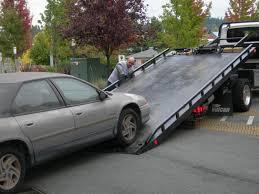
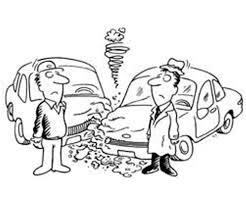
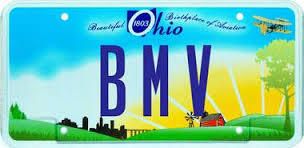
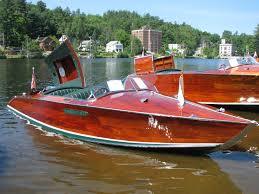
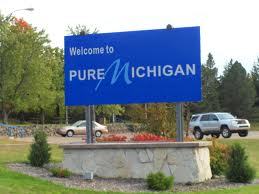
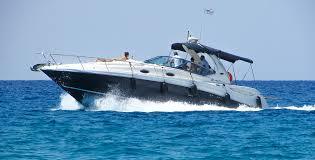

 RSS Feed
RSS Feed